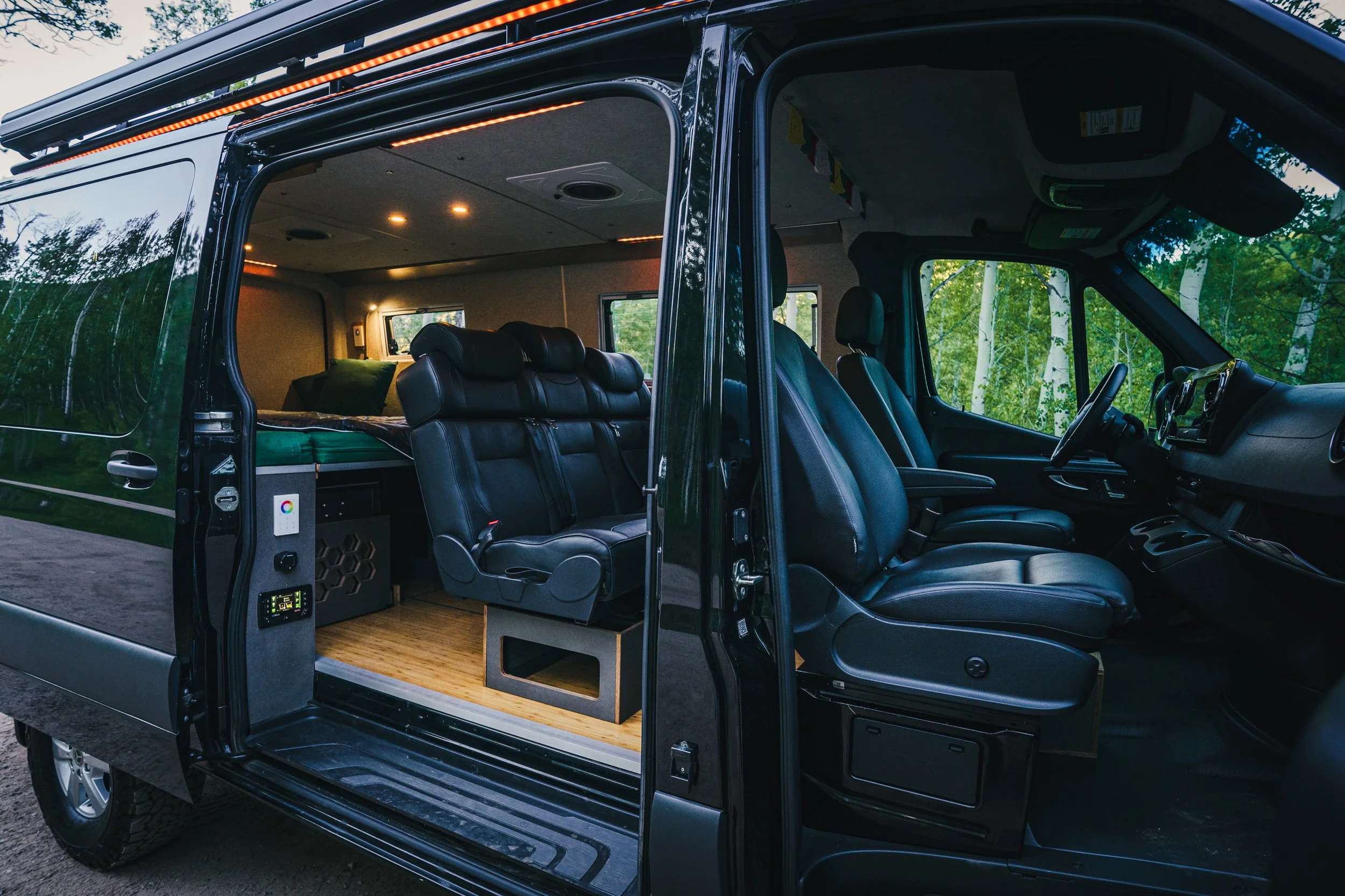Van Build Starter Guide: 5 Tips to Building the Right Van for You
If you’re diving into your first van build (or upgrading your current rig), it can feel like the options are endless. At White River Overland, we’ve seen everything from minimal weekend warriors to full-blown, expedition-ready basecamps on wheels. Before you go deep into gear lists and potential layouts, here are five big-picture considerations to make sure your build works for your adventures.
1. Chassis: Platform, Drivetrain & Wheelbase
It all starts with the foundation. Mercedes Sprinter? Ford Transit? Ram ProMaster? Each platform has its strengths, and it’s worth matching them to your actual use case.
Drivetrain: If you’re running remote mountain passes or winter routes, 4x4 or AWD will make your life easier (and safer). If most of your trips are highway-focused, a 2WD chassis could free up budget for interior upgrades.
Wheelbase: The difference between a 144 vs. 170 Sprinter isn’t just length, it’s maneuverability, storage capacity, and how much living space you can comfortably add. Longer wheelbases are great for multi-zone layouts (think separate bed and lounge), while shorter ones are best on tight trails and urban parking.
Payload & Clearance: Don’t overlook GVWR and stock ground clearance. Adding cabinetry, water tanks, and gear adds up quickly, so you’ll want to plan for room to spare.
Pro tip: Build for how you travel now, not for some distant dream itinerary. We can always add upgrades like lift kits or bigger tires later.
2. Seating & Sleeping: Build for 90% of Your Life
One of the most common mistakes is designing for the rare trip. If you’re planning for the grandkids or a once-a-year group trip, you’ll end up compromising your day-to-day setup.
Ask yourself: Who’s in the van 90% of the time?
If it’s just you (or you and a partner), don’t waste valuable floor space on extra seating or bunks.
Need occasional guest capacity? Modular or convertible setups (e.g., bench-to-bed systems or stowable jump seats) keep things flexible without cluttering your build.
Pro tip: Your van should feel dialed for your regular adventures. Everything else, make it modular.
3. Creature Comforts: Heat, AC & Year-Round Use
A well-built van isn’t just about how it looks, it’s about how you feel when you’re in it.
Heating: Diesel heaters like the Webasto are gold-standard for cold-weather travel. They sip fuel and can run independently of the engine.
Air Conditioning: If you’re chasing desert trails in July, a 12V rooftop AC paired with a robust battery bank will keep things tolerable.
Insulation & Ventilation: Don’t skimp here. Proper insulation (we like 3M Thinsulate) and cross-ventilation with additional windows make a huge difference in comfort and efficiency.
Pro tip: If you’re planning to use your van in multiple seasons or climates, comfort systems aren’t a luxury, they’re a necessity.
4. Budget: Plan for the Long Game
Even high-end builds benefit from staged upgrades. Start with the essentials: chassis, insulation, power, and a basic layout and leave room for iteration once you’ve used the van.
Many of our clients start with a Phase 1 build (sleeping platform, basic galley, power system) and come back after a season for Phase 2 upgrades (like water systems, gear storage, or upgraded batteries).
Pro tip: Overestimate your budget by 10–20%. Quality materials and pro-level installation are worth every penny, and you’ll be glad you left room for tweaks.
5. Off-Grid Capabilities: Power, Water & Comms
Whether you’re parked at a trailhead for a weekend or off-grid for weeks, self-sufficiency is key.
Solar & Power: A lithium battery bank paired with solar panels keeps fridges, lights, and laptops running. Add a DC-DC charger for reliable alternator charging on the move.
Water Systems: Even a simple portable shower or 10–20 gallon tank can transform your off-grid experience. If you’re staying out longer, consider a filtration system or onboard hot water.
Communications: Starlink, WeBoost, or Garmin inReach? Know your comfort level for being off-grid and plan accordingly.
These systems aren’t just about luxury, they’re about safety, independence, and staying out longer without worrying.
Final Thoughts
Building the right van isn’t about following a template, it’s about designing for your lifestyle. Whether you’re dialing in a Sprinter 4x4 for overlanding in the Rockies or a Transit for minimalist weekend setup, the best build is one that fits your adventures and grows with you.
At White River Overland, we help our clients strike the balance between capability, comfort, and budget so they can spend less time stressing over gear lists and more time out exploring.
Ready to design your van? Let’s build it together.




